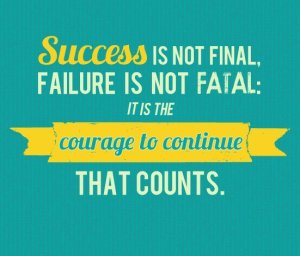With the calendar now midway through November, winter is definitely in the air. One of my routines for this time of year is to prepare the gardens around my property for the coming winter by pruning the shrubs and trees. As you might know, pruning trees is helpful for a variety of reasons:
- to remove dead or diseased branches
- to thin the crown to permit new growth and better air circulation
- to remove obstructing lower branches
- to shape a tree for design purposes
Okay, so I confess that I’m not actually the one out in the backyard with snips trimming branches but I do know the critical importance to the health, safety and aesthetics of my trees and shrubs that the annual pruning exercise means.
So what is your point Frank, I’ll bet your wondering. Quite simply, I find that there is an astonishing parallel between maintaining a garden and ensuring you have a healthy and growing company. Let me break it down a bit.
Trimming the dead branches
First, I’ll describe the practice of trimming away dead branches. There are three main benefits of cutting off dead or diseased branches from trees and shrubs: it makes way for new growth to sprout and flourish, it mitigates the spread of disease and it improves the beauty of the tree.
Every company has the same issue of “dead branches” – unproductive and poor performing employees – and reaps the same benefits by doing some “pruning” – that is, letting those employees go. No matter how successful an organization is, it is inevitable that some employees will always fall into this category and business leaders need to be vigilant with their trimming. By removing these underperforming employees, the company’s up-and-comers have a better chance to stand out and be recognized for their achievements, and grow and prosper as the rest of the company grows.
Furthermore, like a diseased branch the employees that fall into this deadwood category often have a poor attitude that can infect the rest of the company. Pruning will help prevent the spread of morale and culturing-impacting negativism and pessimism.
Pruning also serves to enhance the attraction of the company to potential high-performing candidates, what I call the rock stars… hopefully they will see that this is an organization that doesn’t countenance low or poor performance, enhancing their attraction to the company.
Culling living branches
While it is of critical importance to cut off dead branches, pruning live branches is equally important. Sometimes this mean removing branches that are lower down on the trunk, or thinning out the crown of the shrub or tree. The art and act of trimming living branches is a bit more complex and strategic than removing dead branches. The desired outcome is to selectively remove those branches that are impeding (or will impede) others from growing properly, or are growing in a different direction than you want the tree to grow.
Again, the analogy to a company is striking. Oftentimes you may have a strong and productive employee, but that person’s behaviours or mindset are such that – while maybe acceptable at one point in time – she is now impeding others in the organization from performing to the maximum of their ability. As hard as it may seem, that person needs to go. Similarly, an employee that has a set of skills and capabilities that were extremely valuable to the organization at one point in time – say, during the start-up phase – but now that the company has grown and matured the value of that employee’s capabilities has greatly diminished. He, too, must go for the greater good of the organization.
I know that some of you are thinking, “But what if I make a mistake? What if I cut the wrong person, or too many for that matter?”. Read on and I’ll explain my view on that.
A Living Organism
The last point I will make on this topic is perhaps stating the obvious – much like a tree or a shrub, a company is a living organism. A tree or shrub that is not properly maintained and pruned will over time grow in ways that leave it less strong, vibrant and attractive compared to ones that have been consistently and properly pruned. While a case can be made that it’s never too late to prune a tree, if you let it go too long the amount of effort to get it back into the shape you want it will be high and it in fact may take years to get it going in the direction you want it to.
And so too it goes with a company: let it go untended too long, deferring those tough decisions on cutting out those seemingly healthy and productive “branches” or making excuses for keeping the deadwood around, means some really tough work ahead.
And to address your concern about cutting the wrong employee, or maybe removing too many (perhaps because you’ve left it too long), do not fear. Companies like trees are resilient and naturally rejuvenate – if you snip off the wrong branch while unfortunate another one will grow to take its place; similarly, if you lop off a few too many undeniably it will have a short term impact, but the reality is that it won’t take too long before ample new ones sprout in their place.
My message here is quite simple: at least once a year – and fall is one of the best times – get your organizational “trimmers” out and do your company and employees a favour by cutting back selectively and with determination. I can assure you that if you do so, your company will be stronger, healthier and more prosperous as a result. Why? I practice what I preach and I hold up the success of my companies past and present as the proof in the pudding. Oh, and you should see the trees in my backyard.
 When you’re selling to potential customers, I sincerely hope you’re not taking a “one night stand” approach with them, for lack of a better term. As always, this was a point I touched on in my last blog post that I really want to elaborate on. No one wants to be sold to, which shouldn’t be a surprise to people anymore. The question then, is how do you sell to people without selling to them? The answer is to build a potentially long lasting relationship with them.
When you’re selling to potential customers, I sincerely hope you’re not taking a “one night stand” approach with them, for lack of a better term. As always, this was a point I touched on in my last blog post that I really want to elaborate on. No one wants to be sold to, which shouldn’t be a surprise to people anymore. The question then, is how do you sell to people without selling to them? The answer is to build a potentially long lasting relationship with them.
 Whether you only have one employee or 50 employees, execution will always be difficult. By execution I mean of course the way that you are completing tasks that will grow your business, and deliver positive results either to your leadership in the company or to yourself.
Whether you only have one employee or 50 employees, execution will always be difficult. By execution I mean of course the way that you are completing tasks that will grow your business, and deliver positive results either to your leadership in the company or to yourself. I’ve made plenty of mistakes during my time as an entrepreneur. While I could have dwelled on them and got crushed by them, luckily I’ve always used them as lessons to push me forward. That being said, there’s a reason why mentors are usually those who are older than us.
I’ve made plenty of mistakes during my time as an entrepreneur. While I could have dwelled on them and got crushed by them, luckily I’ve always used them as lessons to push me forward. That being said, there’s a reason why mentors are usually those who are older than us. There’s a big misconception when it comes to failure. Ever since we’ve been children, we’ve seen that failing is nothing but a negative experience. Teachers would be disappointed and parents would yell at you for failing a test. If you failed a course, you’d use up your valuable summer time taking make-up courses. There has always been negativity associated with failure.
There’s a big misconception when it comes to failure. Ever since we’ve been children, we’ve seen that failing is nothing but a negative experience. Teachers would be disappointed and parents would yell at you for failing a test. If you failed a course, you’d use up your valuable summer time taking make-up courses. There has always been negativity associated with failure. If you decide to leave your job and open your own business, there are a few things you assume you’ll leave behind as well. Job security, consistency and a personal life are what some people think they’ll leave behind – and sometimes this is true. The problem here is that when people really start to think about these things, they get worried, and that worrying more often than not leads to fear.
If you decide to leave your job and open your own business, there are a few things you assume you’ll leave behind as well. Job security, consistency and a personal life are what some people think they’ll leave behind – and sometimes this is true. The problem here is that when people really start to think about these things, they get worried, and that worrying more often than not leads to fear.